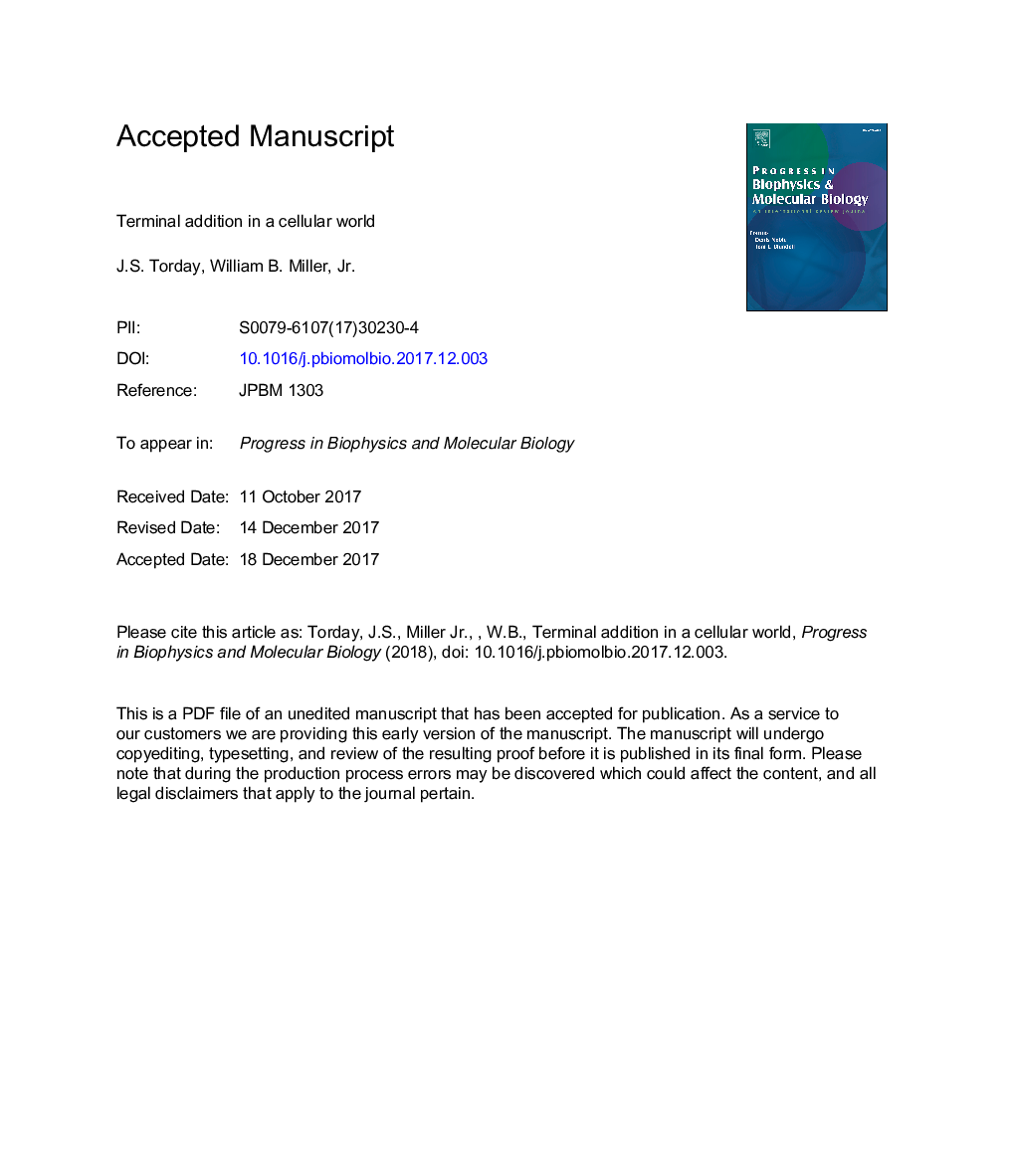| Article ID | Journal | Published Year | Pages | File Type |
|---|---|---|---|---|
| 8400173 | Progress in Biophysics and Molecular Biology | 2018 | 32 Pages |
Abstract
Recent advances in our understanding of evolutionary development permit a reframed appraisal of Terminal Addition as a continuous historical process of cellular-environmental complementarity. Within this frame of reference, evolutionary terminal additions can be identified as environmental induction of episodic adjustments to cell-cell signaling patterns that yield the cellular-molecular pathways that lead to differing developmental forms. Phenotypes derive, thereby, through cellular mutualistic/competitive niche constructions in reciprocating responsiveness to environmental stresses and epigenetic impacts. In such terms, Terminal Addition flows according to a logic of cellular needs confronting environmental challenges over space-time. A reconciliation of evolutionary development and Terminal Addition can be achieved through a combined focus on cell-cell signaling, molecular phylogenies and a broader understanding of epigenetic phenomena among eukaryotic organisms. When understood in this manner, Terminal Addition has an important role in evolutionary development, and chronic disease might be considered as a form of 'reverse evolution' of the self-same processes.
Related Topics
Life Sciences
Biochemistry, Genetics and Molecular Biology
Biophysics
Authors
J.S. Torday, William B. Jr.,
